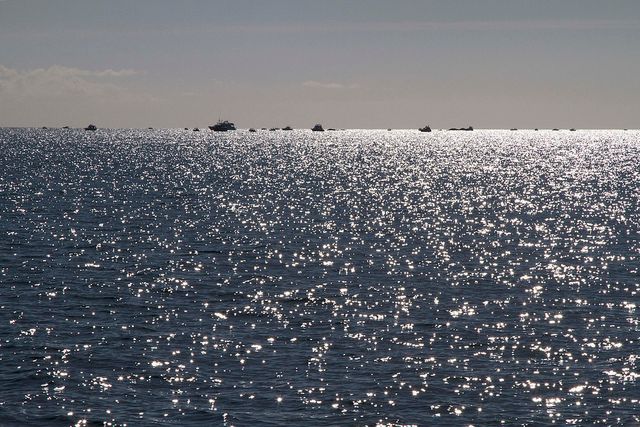Landscape and Natural Character
Locations for siting marine farms are typically restricted by suitable environmental parameters. For example, shellfish filter feed, taking particulates of food (plankton) from the water column, and can concentrate toxins from the water in their flesh. 16dd0bcc-a72b-43c8-88aa-d646a6ed1c94 Thus for successful production of key New Zealand aquaculture species, unpolluted and sheltered waters are required, away from centres of high population density. This is to ensure that runoff from land-based activities does not affect the marine environment where the farm is located.

There are relatively few places which are appropriate sites for aquaculture, and these tend to be places which are also valued for other activities, and for their unspoilt landscape values and natural character.
Shellfish farms usually have elements that are visible from the shore. Mussel farms have lines of buoys holding up the mussel lines which are visible as horizontal structures on the water plane. Some lines are deliberately suspended below the surface to avoid swells. Although not permanent fixtures, barges working the farms may be perceived as having an impact on amenity values when stationary. In addition, navigational lighting marking the farms is typically visible from two nautical miles away at night time. In the case of oyster farms, rows of wooden racks can be visible in the intertidal zone during low tide.
Finfish farms are usually visible as vertical structures on the surface of the water. They can be particularly noticeable as they typically use high nets to keep predators out. Similar to mussel farms, service structures and craft working on the farm will also be visible.
In terms of location, several key variables affect the ability of the marine environment to visually absorb marine farming activities. These are the visual scale of the affected coastal environment, the degree of visual interest in the view, and the elevation and distance from which the farm is likely to be viewed.
99316a37-1bd5-48ab-9aa3-d800dfe26bd4
Where an area has outstanding natural character, or is an outstanding natural landscape, Policies 13 and 15 of the New Zealand Coastal Policy Statement require any adverse effects to be avoided. In practice, this means that consent should not be granted for marine farms which have adverse effects on the landscape values of these areas. 5d640f40-9ec9-4f2d-ac97-193e44823a4b This issue is discussed further in the decision-making framework section below.
-
http://www.greenshell.com/safe.html
-
Bernard Brown Associates Ltd, 2008
-
Environmental Defence Society Incorporated v The New Zealand King Salmon Company Limited [2014]
Last updated at 1:31PM on February 25, 2015